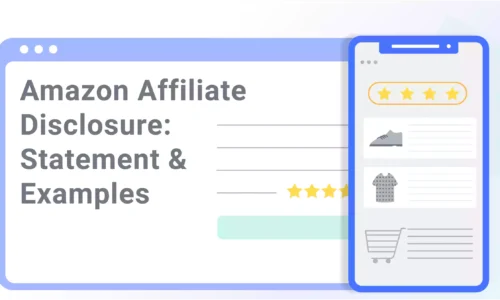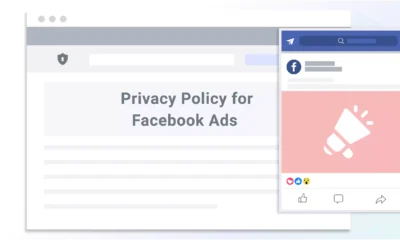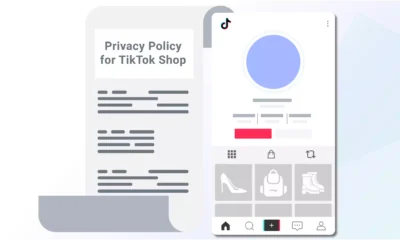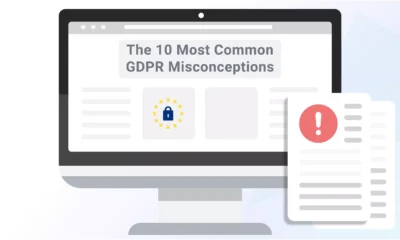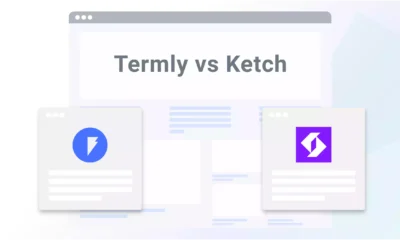The Amazon Associates Program — also called the Amazon affiliate program — is a popular way for bloggers and website owners to monetize their traffic.
Because product promotions by Amazon Associates — or affiliates — are a form of advertising, Amazon and the U.S. Federal Trade Commission (FTC) have made it clear that associates must disclose their participation in the program to their audience.
Below, we provide the Amazon and FTC disclosures you need to post to avoid getting banned from the affiliate program or, worse, having your earnings seized by law enforcement agencies.
Amazon Affiliate Disclosure Template
As an Amazon Associate, the site where you promote affiliate links needs to satisfy Amazon’s disclosure requirements and the FTC’s endorsement guidelines.
To meet Amazon’s appropriate conduct standards, you need to publish a disclosure statement that meets two standards:
- The disclosure must be clear and simple, like “(paid link)”, “#ad”, or “#CommisionsEarned”
- It should be conspicuously placed near any affiliate link or product review where all users easily notice it.
Use the following Amazon disclosure statement (or something similar) on your site:
An alternative Amazon disclaimer you can use is:
Why are there two different versions of the disclaimer for Amazon affiliates?
Amazon has updated its guidelines periodically over the years.
The first disclaimer represents Amazon’s most recent recommendations, whereas the second is what Amazon recommended until October 2019.
You’re free to use either, as both comply with Amazon’s guidelines, but given its brevity, we recommended the first disclaimer.
Generate a Free Disclaimer Using Termly
Here’s how to use Termly’s Disclaimer Generator to create a custom and legally compliant disclaimer with an affiliates section.
Step 1: Go to Termly’s disclaimer generator.
Step 2: Answer a few simple prompts and questions, and go through all the steps until you reach “Final Details.”
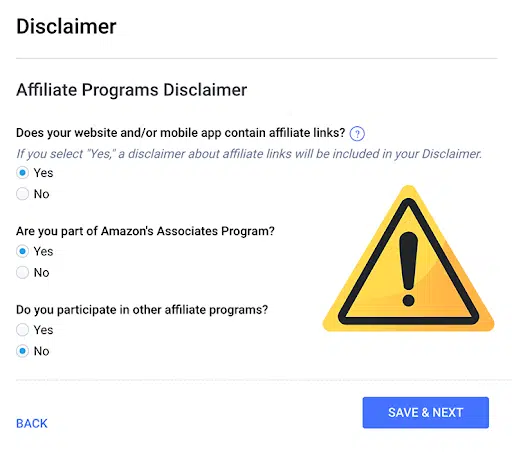
Step 3: Once you’ve filled in everything and are satisfied with the preview, click “Publish.”
You will then be prompted to create an account on Termly so you can save and edit your legal disclaimer further.
FTC Affiliate Disclaimer
Amazon’s affiliate link requirements align with the affiliate disclosure guidelines described by the FTC.
Notably, the commission evaluates whether your disclosure is clear enough for the average user to find and understand.
We recommend using this FTC affiliate disclosure statement on your website or blog:
On social media (e.g., Twitter, Instagram, Facebook), the FTC allows you to use a hashtag or word/phrase (instead of a complete statement) to indicate affiliate links in your posts.
Examples of FTC-compliant disclosure phrasing and hashtags include:
You may have noticed that the word “affiliate” is missing from the list.
According to the FTC, the average user may not understand what terms like “affiliate” and “affiliate links” mean.
So, tagging your posts as #affiliate would not be enough to comply with the FTC’s guidelines.
What Is an Amazon Affiliate Disclosure?
An Amazon affiliate disclosure is a statement on your website informing visitors that Amazon compensates you if they click on any links to make a purchase.
It communicates to your visitors that you’re in a material relationship with Amazon and are part of their Amazon Associate Program.
Posting an Amazon affiliate disclosure is required by Amazon and by the FTC as part of their endorsement guidelines.
Do I Need an Amazon Disclosure Statement?
You need an Amazon Disclosure Statement to satisfy Amazon’s conditions for being part of their Associate Program and to follow the principle of Truth in Advertising upheld by the FTC:
“When consumers see or hear an advertisement, whether it’s on the Internet, radio or television, or anywhere else, federal law says that ad must be truthful, not misleading, and, when appropriate, backed by scientific evidence. The Federal Trade Commission enforces these truth-in-advertising laws […] no matter where an ad appears.”
If you intentionally or unintentionally conceal that your promotional post contains affiliate links — a Facebook post, blog post, YouTube video, or tweet — your advertising is not entirely truthful.
Think of it this way: If your friend says, “Hey, I found a great new app that you have to try,” would your feelings change if you knew they were compensated in some way for giving such a strong endorsement?
Because of this potential swaying power, Section 5 of the Amazon Associates Program Operating Agreement and the FTC’s endorsement guidance require affiliate disclosures.
What happens if you don’t disclose a link and the FTC finds out?
While the commission has no authority to issue fines regarding disclosure violations, they can direct law enforcement agencies to seize all of the profits you made unlawfully.
Amazon Affiliate Disclosure Examples
Now that you know why you need an Amazon affiliate disclosure, let’s look at a few real-world examples of Amazon affiliate disclosures.
Amazon Disclosure Examples for Websites and Blogs
For websites and blogs, the best place to post your affiliate link disclosure is in a static part of your site, like the footer or the header.
For example, an Amazon affiliate website that reviews hiking and camping gear, Territory Supply, posts its affiliate disclosure directly in the footer of its website.
As shown in the screenshot below, the footer appears on every page, including the ones with affiliate links, so it’s easy for users to always find and read.

Note how Territory Supply complies with the Amazon disclosure and FTC guidelines by adding the word “commissions” to their statement.
In addition, the footer area has a link to a “Disclosure Policy” page, which you can view in the screenshot below.
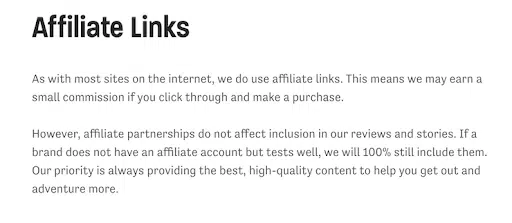
In its disclosure policy, Territory Supply further clarifies its relationship with Amazon, helping ease any user concerns.
Affiliate sites on an ecommerce platform can benefit from an ecommerce privacy policy to help comply with the law and put your customers at ease.
Another site that engages in affiliate marketing, Wirecutter, places its disclaimer in the header on the homepage and on all pages with affiliate links, as shown in the screenshot below.

Regardless of whether you choose to use the footer or header of your website, follow the example of these two companies and make sure to put yours in a static area.
Amazon Disclosure Examples for Social Media
For social media posts, make sure your Amazon affiliate link disclosure is written in the video description or body of the post.
A popular tech product review channel on YouTube and Facebook, Linus Tech Tips, indicates affiliate links with the tag (PAID LINK), as shown in the screenshot below.
![]()
Remember, the disclosure guidelines apply even if you only use temporary posts like Instagram and Facebook Stories to promote your affiliate links.
The FTC’s affiliate guidelines apply to all promotional mediums you use — even email.
If you use email, learn how to avoid violating the CAN-SPAM Act and review your email privacy policy for regulatory compliance.
Where To Place Your Amazon Affiliate Disclosure
Post your Amazon affiliate disclaimer on any page where affiliate links appear and on other prominent pages or areas on your site, including:
- On the homepage
- On the “About” page
- In the header area
- In the sidebar area
- In the footer area
You might also link it to an easily accessible page with a self-explanatory hyperlink text, like:
- “Amazon Affiliate Disclosure”
- “Amazon Affiliate Disclaimer”
- “Amazon Associate Disclosure”
- “Amazon Associate Disclaimer”
Remember, even with the appropriate Amazon disclaimer text, you can still run afoul of Amazon and the FTC by displaying it inappropriately.
Where To Place Your FTC Disclosure
Like the Amazon disclaimer, the FTC disclosure must appear on the page where you include an affiliate link.
Regarding social media posts, if your post is cut off by a “read more” button, as on Instagram and Facebook, your disclosure statement or phrase must appear before this cut-off point.
Your audience must be able to tell that your post is promotional even if they do not click on “read more” (red box in the image).
If you use customer testimonials as part of your affiliate marketing, you must follow the FTC’s guidelines on testimonials.
Other Essential Legal Policies
Alongside your Amazon affiliate disclaimers, your website also likely needs a privacy policy and a terms of use agreement.
While a privacy policy is essential to comply with data privacy laws like the General Data
Protection Regulation (GDPR) and the California Consumer Privacy Act (CCPA), a terms of use helps you enforce your rules sitewide and protects you from abusive users.
That may seem like a lot, but we got you covered!
Termly’s privacy policy generator and terms of use generator make legal compliance and abuse protection a breeze.
Summary
If you’re an Amazon Associate, you must be upfront with your audience and post an Amazon affiliate disclaimer throughout your website.
Not doing so can get you banned from the Associates program and draw the attention of the FTC and law enforcement agencies.
Fortunately, complying with Amazon FTC requirements is as simple as knowing what disclaimers to use and where to place them.
Apart from referring to the template and example statements above, make your customized disclaimers in minutes using our disclaimer generator.

